Average Handle Time Benchmarks for 2025 Revealed
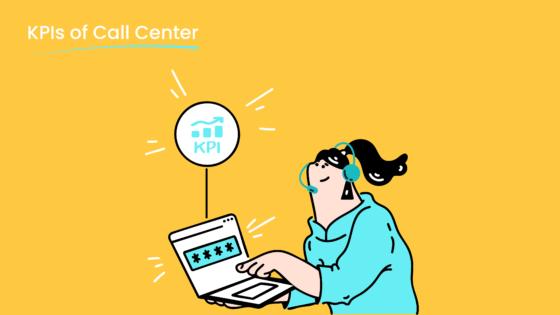
Average handle time (AHT) benchmarks for 2025 reveal a shift in focus from speed to quality. Modern standards emphasize resolving customer issues effectively, even if it takes longer. For instance, retail aims for 3-5 minutes, while healthcare targets 6-8 minutes. This evolution reflects changing customer expectations, where satisfaction outweighs quick resolutions.
Benchmarking average handle time helps you identify inefficiencies and improve service quality. Industries like financial services and technology have seen significant gains by aligning AHT with customer needs. Tools like Sobot’s Voice/Call Center further enhance efficiency, ensuring seamless operations and better outcomes.
📊 Did you know? The average speed of answer (ASA) is now 28 seconds, with a recommended target of 40 seconds, showcasing the importance of balancing speed and quality.
Understanding Average Handle Time (AHT)
What is Average Handle Time?
Components of AHT: Talk Time, Hold Time, and After-Call Work
Average handle time (AHT) measures the total time you spend resolving a customer’s issue during a call. It includes three main components: talk time, hold time, and after-call work. Talk time refers to the duration of the conversation between the agent and the customer. Hold time accounts for the moments when the customer waits while the agent retrieves information or consults with others. After-call work involves the tasks completed after the call ends, such as updating records or sending follow-up emails.
For example, if a call lasts 5 minutes, with 3 minutes of talk time, 1 minute on hold, and 1 minute of after-call work, the AHT for that interaction is 5 minutes. By understanding these components, you can identify areas to improve efficiency and reduce unnecessary delays.
Why AHT is a Key Call Center Metric
AHT is one of the most important call center metrics because it directly impacts both operational efficiency and customer satisfaction. Shorter AHT often means your agents are resolving issues quickly, which saves customers time and enhances their experience. However, focusing solely on speed can compromise the quality of service. Striking the right balance ensures that customers leave satisfied while your team remains productive.
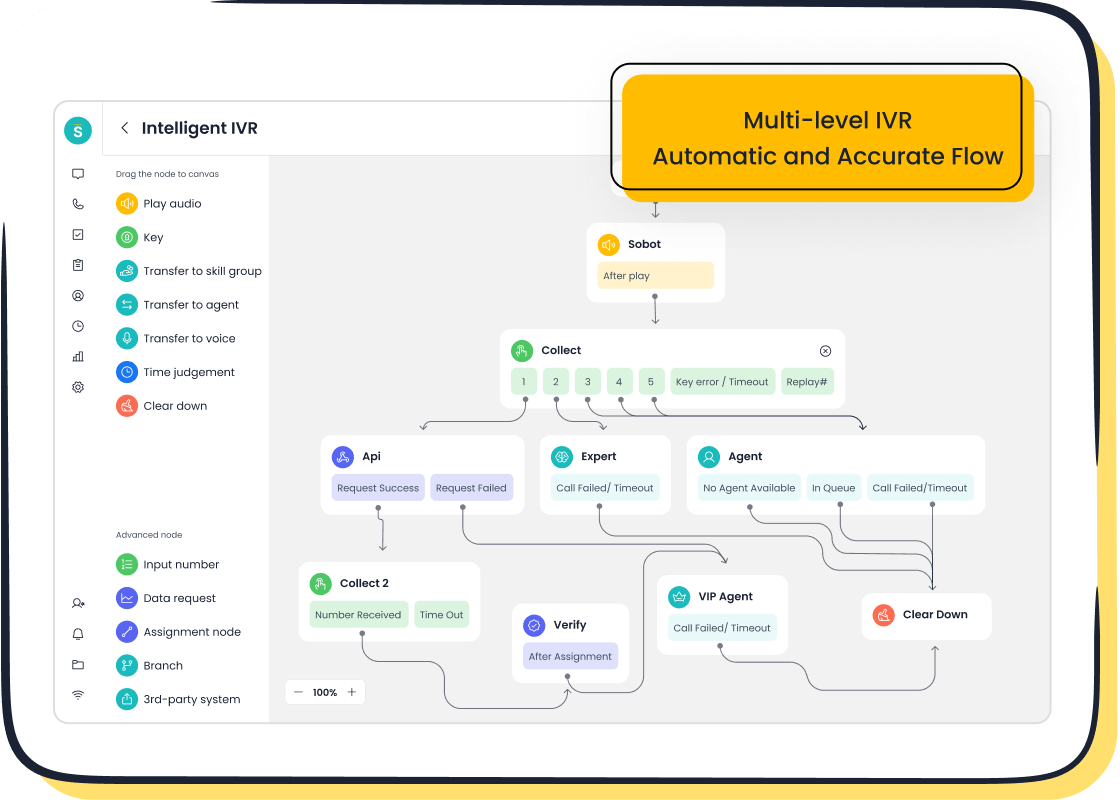
Tracking AHT also helps you plan better. For instance, knowing the average handle time allows you to calculate staffing needs accurately, ensuring you have enough agents to handle peak call volumes. Tools like Sobot’s Voice/Call Center can assist in monitoring and optimizing AHT by providing real-time data and insights.
The Role of AHT in Call Center Statistics
Measuring Agent Efficiency and Productivity
AHT serves as a reliable indicator of agent efficiency. Lower AHT suggests that your agents are handling calls effectively, enabling them to assist more customers within a given timeframe. This efficiency not only reduces customer wait times but also improves overall call center performance. For example, a call center with an optimized AHT can manage higher call volumes without increasing staff.
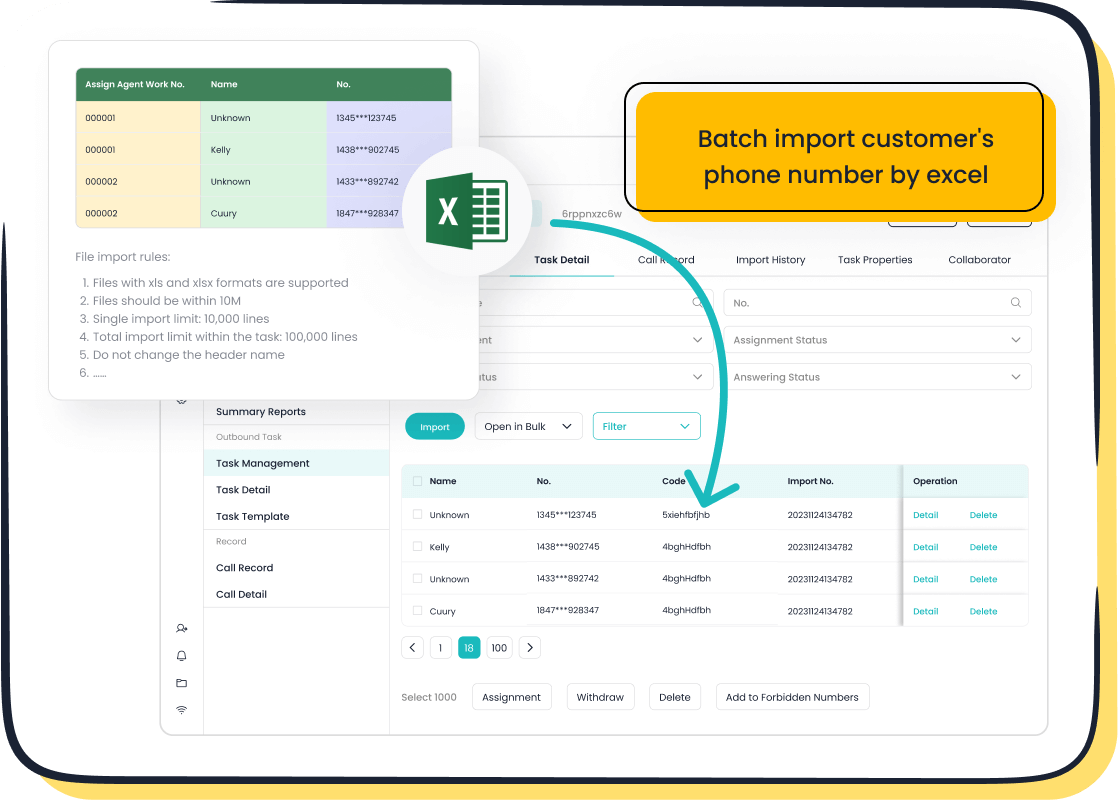
Sobot’s Voice/Call Center offers features like intelligent IVR and smart call routing, which streamline workflows and reduce unnecessary hold times. These tools empower your agents to focus on resolving issues faster, boosting productivity.
Impact on Customer Satisfaction Score (CSAT)
AHT plays a significant role in determining your customer satisfaction score. Customers value quick and effective resolutions. When your AHT aligns with their expectations, it enhances their overall experience. For instance, a shorter hold time can leave a positive impression, while prolonged delays may lead to frustration.
Optimizing AHT doesn’t just improve CSAT; it also fosters customer loyalty. Consistently meeting or exceeding expectations builds trust, encouraging customers to return. By leveraging advanced tools like Sobot’s AI-powered Voicebot, you can further enhance the customer experience by automating repetitive tasks and reducing wait times.
Industry-Specific Average Handle Time Benchmarks for 2025
Retail Industry
AHT Benchmarks for Retail Customer Service
In the retail sector, average handle time (AHT) benchmarks for 2025 reflect a focus on efficiency and customer satisfaction. The median AHT stands at 6.25 minutes, with a range from 0.82 to 46.6 minutes. This variation highlights the diverse nature of retail inquiries, from quick product questions to complex order issues. Retail, e-commerce, and consumer goods sectors aim for an AHT of approximately 3 minutes and 29 seconds, emphasizing swift resolutions to enhance customer experience.
Factors Influencing Retail AHT: E-commerce and Omnichannel Support

E-commerce and omnichannel support significantly influence retail AHT. The integration of multiple communication channels, such as live chat and social media, allows customers to choose their preferred method of contact. This flexibility can reduce AHT by streamlining interactions. Tools like Sobot's Voice/Call Center facilitate seamless omnichannel support, enabling agents to access customer information quickly and resolve issues efficiently.
Healthcare Industry
AHT Standards for Healthcare Call Centers
Healthcare call centers face unique challenges, with AHT standards reflecting the complexity of inquiries. According to industry studies, the average handle time ranges from 3 minutes and 28 seconds to 6.6 minutes. These figures underscore the need for thorough and accurate responses, particularly when dealing with sensitive health information.
Challenges in Healthcare: Compliance and Complex Inquiries
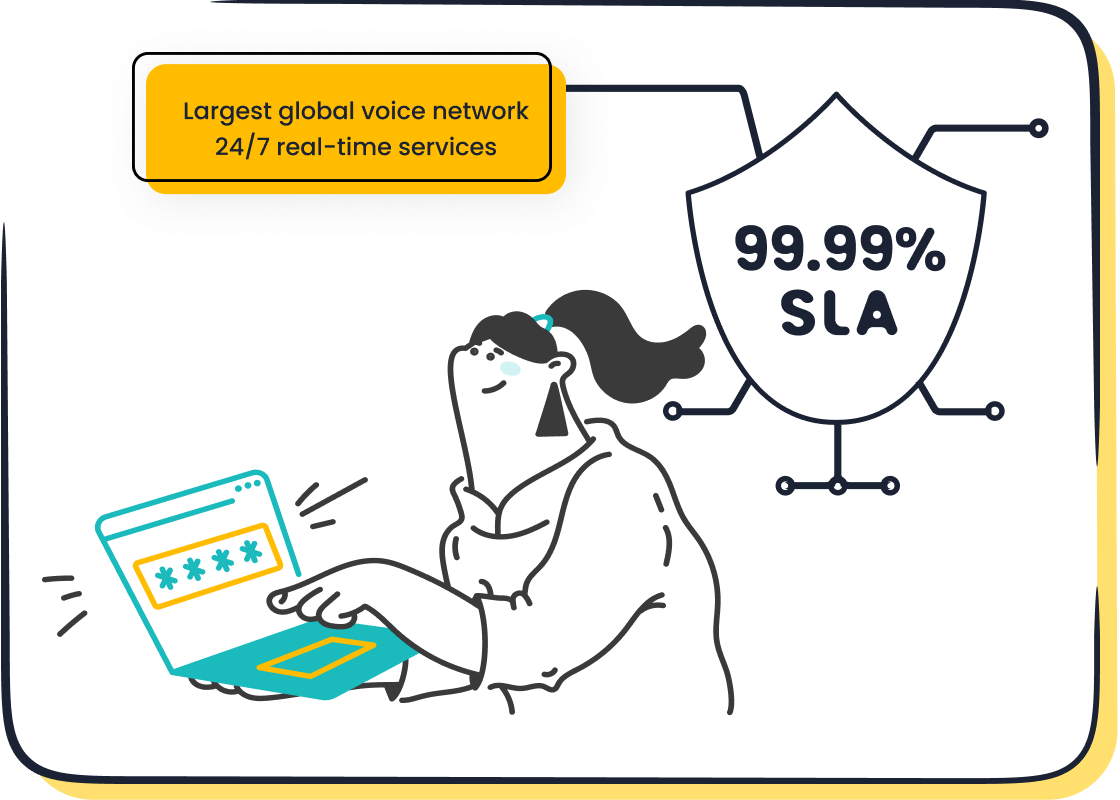
Compliance with regulations and handling complex inquiries are major challenges in healthcare. Agents must navigate privacy laws while providing detailed assistance, which can extend AHT. Sobot's AI-powered solutions can help streamline processes by automating routine tasks, allowing agents to focus on more intricate issues.
Telecommunications Industry
AHT Benchmarks for Telecom Providers
Telecommunications providers aim for efficient service delivery, with AHT benchmarks reflecting this goal. The industry strives to maintain a balance between quick resolutions and comprehensive support. The average handle time in this sector often aligns with technical support demands, which can vary based on the complexity of issues.
Impact of Technical Support on AHT
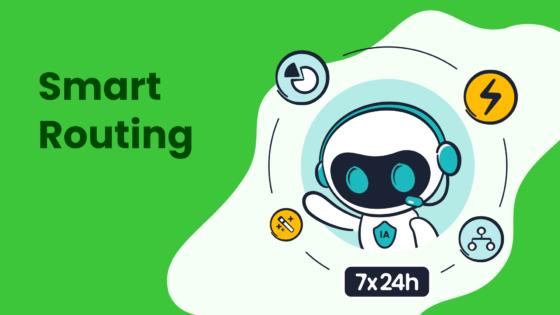
Technical support significantly impacts AHT in telecommunications. Complex technical issues require detailed troubleshooting, which can prolong call durations. However, advanced call center metrics and tools, like Sobot's intelligent IVR and smart call routing, can optimize workflows and reduce unnecessary hold times, enhancing overall efficiency.

Financial Services Industry
AHT Benchmarks for Banks and Financial Institutions
In financial services, the average handle time (AHT) benchmark for 2025 is approximately 4 minutes and 45 seconds. This figure reflects the industry's focus on balancing efficiency with the need for thoroughness. Calls in this sector often involve high-value transactions or sensitive information, requiring agents to dedicate more time to ensure accuracy. For example, resolving a query about a mortgage application or investment portfolio demands careful attention to detail.
You can optimize AHT in financial services by leveraging advanced call center metrics. Tools like Sobot’s Voice/Call Center provide features such as smart call routing and real-time monitoring. These capabilities help agents manage calls more effectively, reducing unnecessary delays while maintaining service quality. By aligning your operations with these benchmarks, you can enhance both efficiency and customer trust.
Role of Security and Verification in Prolonging AHT
Security and verification processes play a significant role in extending AHT within financial services. Agents must verify customer identities and comply with strict regulations, which can add several minutes to each call. For instance, confirming account details or conducting multi-factor authentication ensures data security but increases handle time.
Sobot’s AI-powered Voicebot can streamline these processes by automating routine verifications. This reduces the burden on agents and shortens call durations without compromising security. By integrating such tools, you can address these challenges effectively and improve overall customer satisfaction.
Other Industries
AHT Trends in Travel and Hospitality
The travel and hospitality industry sees unique AHT trends due to the nature of customer inquiries. Average handle time often varies based on the complexity of requests, such as booking modifications or travel cancellations. For 2025, the industry aims to maintain an AHT of around 5-7 minutes, reflecting the need for both speed and personalized service.
Omnichannel support plays a crucial role in managing AHT in this sector. Customers frequently use multiple channels, such as live chat or phone calls, to resolve their issues. Sobot’s unified workspace enables agents to access customer data seamlessly across channels, ensuring faster resolutions and a smoother experience.
Benchmarks for Utilities and Energy Sectors
Utilities and energy sectors face distinct challenges that influence AHT benchmarks. The average handle time in these industries typically ranges from 6 to 8 minutes. This duration accounts for the complexity of inquiries, such as billing disputes or service outages, which require detailed explanations.
To meet these benchmarks, you can adopt tools like Sobot’s Voice/Call Center. Features such as intelligent IVR and bulk outbound tasks help streamline workflows, enabling agents to handle calls more efficiently. By implementing these solutions, you can improve operational efficiency and meet customer expectations.
Factors Influencing Average Handle Time Benchmarks
Technology and Tools
How Sobot's Voice/Call Center Reduces AHT

Technology plays a pivotal role in reducing average handle time (AHT). Sobot's Voice/Call Center offers advanced features like intelligent IVR and AI-powered Voicebot, which streamline call routing and automate repetitive tasks. These tools allow agents to focus on resolving customer issues efficiently. For example, Sobot's smart call routing ensures that customers connect with the right agent immediately, minimizing hold times.
A study by Bupa highlights the impact of technology on AHT. By implementing AI-driven tools and advanced call routing, they achieved a 25% reduction in AHT. Similarly, Sobot's real-time monitoring and analytics empower you to identify bottlenecks and optimize workflows, enhancing both customer service efficiency and the overall customer experience.
Role of AI and Automation in Optimizing AHT
AI and automation have transformed call center operations. Virtual assistants and self-service options now handle routine inquiries, reducing the workload on human agents. This not only shortens AHT but also improves first contact resolution rates. For instance, every 1% improvement in first contact resolution correlates with a 1% increase in customer satisfaction and a 1% reduction in operating costs, according to SQM Group.
Sobot's AI-powered Voicebot exemplifies this trend. It uses intent recognition to address customer queries instantly, ensuring faster resolutions. By integrating such tools, you can optimize call center metrics and deliver a seamless customer experience.
Customer Expectations
Demand for Faster Resolutions
Modern customers expect quick and effective solutions. Surveys reveal that by 2025, customers will demand a first contact resolution rate of 80% or higher. This shift underscores the importance of aligning AHT with customer expectations. In healthcare, for example, organizations target an 85% FCR rate to enhance patient satisfaction.
Meeting these expectations requires efficient call center statistics and tools. Sobot's unified workspace equips agents with all necessary customer data, enabling faster resolutions and improving the overall customer experience.
Preference for Self-Service Options
Self-service options have become a cornerstone of customer service efficiency. Many customers prefer resolving issues independently through FAQs, chatbots, or automated systems. This trend not only reduces AHT but also enhances customer satisfaction. For example, Sobot's AI-powered chatbot provides 24/7 support, handling repetitive queries and freeing agents for complex tasks.
By offering self-service options, you can cater to tech-savvy customers while maintaining high service standards. This approach aligns with evolving customer preferences and ensures operational efficiency.
Industry-Specific Challenges
Regulatory and Compliance Requirements
Regulatory requirements often extend AHT, especially in industries like healthcare and financial services. Agents must verify customer identities and comply with strict guidelines, which can add several minutes to each call. For instance, multi-factor authentication ensures data security but increases handle time.
Sobot's Voice/Call Center addresses these challenges by automating verification processes. This reduces agent workload and shortens call durations without compromising compliance, improving both efficiency and customer trust.
Complexity of Customer Inquiries
The complexity of customer inquiries varies across industries. Technical support in telecommunications or detailed financial consultations often require longer call durations. Factors like product complexity and customer demographics also influence AHT. For example, older customers or those less familiar with technology may need additional assistance.
The table below summarizes key factors influencing AHT:
| Factor | Description |
|---|---|
| Call Complexity | The nature and difficulty of customer issues directly impact Average Handle Time. |
| Agent Experience and Training | More experienced and well-trained agents usually handle calls more efficiently. |
| Type of Contact Center | Different industries and services have varying baseline AHTs. |
| Customer Demographics | Factors like age, tech-savviness, and language proficiency of customers can influence AHT. |
| Available Technology and Tools | The efficiency of systems and tools agents use can significantly impact AHT. |
By addressing these factors, you can optimize AHT and improve customer service efficiency.
Trends Shaping Average Handle Time in 2025
AI and Automation in Call Centers
AI-Driven Call Routing and Resolution
AI in call centers has revolutionized how calls are managed. AI-driven call routing ensures customers connect with the right agent or department immediately. This reduces unnecessary transfers and hold times. For example, advanced systems analyze customer intent through voice or text inputs and route calls accordingly. This approach not only saves time but also enhances the customer experience by addressing issues faster.
A recent study highlights the impact of AI-driven call routing on AHT. The results are compelling:
| Metric | Result |
|---|---|
| Reduction in AHT | 40% |
| Decrease in agent workload | 90% |
These figures demonstrate how AI-driven solutions can transform call center efficiency while improving customer satisfaction.
Automation of Repetitive Tasks
Automation simplifies repetitive tasks like identity verification or account updates. By automating these processes, agents can focus on resolving complex issues. For instance, Sobot’s AI-powered Voicebot handles routine inquiries, reducing agent workload and speeding up resolutions. This automation not only shortens AHT but also improves first-contact resolution rates, a key factor in enhancing the overall customer experience.
Omnichannel Customer Support
Integration of Multiple Communication Channels
Omnichannel support allows customers to switch between channels seamlessly. Whether they start with live chat and move to a phone call or vice versa, the transition feels effortless. This integration reduces the time agents spend gathering information, as all customer data remains centralized. Tools like Sobot’s unified workspace enable agents to access this data instantly, ensuring faster resolutions.
- Omnichannel support enables a seamless transition between channels, reducing the time agents spend on information gathering.
- Centralized information and advanced technologies lead to faster resolution times.
- Improved efficiency contributes to a reduction in Average Handle Time (AHT).
Impact on Call Center Metrics and AHT
Omnichannel strategies significantly improve call center metrics. By streamlining workflows and reducing redundancies, they lower AHT and enhance agent productivity. For example, a customer inquiry that begins on social media and concludes via phone can be resolved faster when agents have access to all interaction history. This approach not only saves time but also boosts customer satisfaction.
Personalization in Customer Service
Balancing Personalization with Efficiency
Personalization enhances customer interactions but can sometimes increase AHT. Striking the right balance is crucial. Agents equipped with customer data can provide tailored solutions without unnecessary delays. For instance, Sobot’s Voice/Call Center integrates customer profiles, enabling agents to address issues more effectively. This balance ensures efficiency while maintaining a high-quality customer experience.
Role of Data Analytics in Improving AHT
Data analytics plays a vital role in optimizing AHT. By analyzing call patterns and customer behavior, you can identify bottlenecks and implement targeted improvements. For example, analytics might reveal that certain inquiries take longer due to outdated processes. Addressing these issues can significantly reduce AHT while enhancing service quality.
How to Improve Average Handle Time in 2025
Leverage Advanced Technology
Implement AI-Powered Tools like Sobot's Voice/Call Center

AI-powered tools can transform how you manage average handle time (AHT). These tools automate repetitive tasks, such as taking notes during calls or compiling after-call summaries. This allows your agents to focus on resolving customer issues effectively. For instance, Sobot's Voice/Call Center uses intelligent IVR and AI-powered Voicebot to streamline call routing and automate routine processes. These features reduce hold times and improve first call resolution rates, enhancing both efficiency and the customer experience.
Other software, like AmplifAI, analyzes contact center data to provide instant insights. These insights help you identify inefficiencies and optimize workflows. By leveraging such tools, you can improve call center performance metrics and achieve a better balance between speed and quality.
Use Analytics to Identify and Address Bottlenecks
Analytics play a crucial role in reducing AHT. By analyzing call patterns and agent performance, you can pinpoint bottlenecks that slow down resolutions. For example, Sobot's real-time monitoring tools provide actionable data, enabling you to address inefficiencies promptly. This data-driven approach not only improves AHT but also boosts your customer satisfaction score by ensuring faster and more effective service.
Optimize Call Center Processes
Streamline Workflows and Reduce After-Call Work
Streamlining workflows is essential for reducing AHT. Simplified processes, such as automated ticketing and task assignments, allow agents to focus on customer interactions. Sobot's unified workspace integrates customer data and communication channels, minimizing the time agents spend switching between systems. This reduces after-call work and enhances overall efficiency.
Regular feedback and evaluations also help agents refine their skills. A structured framework ensures consistent feedback, enabling representatives to adapt and improve. Targeted training sessions can address specific weaknesses, further enhancing call center performance metrics.
Train Agents for Faster Issue Resolution
Well-trained agents resolve issues faster, directly impacting AHT. Training programs should focus on equipping agents with the skills needed to handle complex inquiries efficiently. For example, role-playing scenarios and real-time coaching can prepare agents for high-pressure situations. Regular feedback sessions also help agents understand their performance and make necessary adjustments. These efforts improve first call resolution rates and reduce the customer effort score, leading to better outcomes.
Enhance Customer Experience
Provide Self-Service Options
Self-service options significantly reduce AHT by empowering customers to resolve issues independently. User-friendly tools like IVR systems, online FAQs, and AI-powered chatbots handle routine queries, freeing agents for more complex tasks. Sobot's chatbot, for instance, provides 24/7 support, ensuring customers can access assistance anytime. Comprehensive self-service resources also alleviate the burden on agents, improving both efficiency and the customer experience.
Studies show that customers prefer robust self-service channels. Regular updates and intuitive designs enhance their effectiveness, ensuring customers find the information they need quickly. This approach not only reduces AHT but also boosts customer satisfaction.
Focus on First-Call Resolution
First-call resolution is a critical factor in improving AHT. Resolving issues during the initial interaction eliminates the need for follow-ups, saving time for both agents and customers. Tools like Sobot's smart call routing connect customers to the right agent immediately, increasing the likelihood of resolving issues on the first attempt. By prioritizing first-call resolution, you can enhance customer satisfaction scores and streamline operations.
Average handle time (AHT) benchmarks for 2025 highlight the unique demands of each industry. For example, healthcare averages 6.6 minutes, while banking targets 6 minutes. These benchmarks align with first-call resolution (FCR) and customer satisfaction metrics (CSAT), as shown below:
| Industry | AHT (minutes) | FCR (%) | CSAT (%) |
|---|---|---|---|
| Health care | 6.6 | 71 | N/A |
| Banking | 6 | 71 | >80 |
| Retail | N/A | 78 | >85 |
| Insurance | 7 | 76 | >80 |
Understanding and optimizing AHT ensures operational success. Tools like Sobot's Voice/Call Center help you achieve this by streamlining workflows and enhancing efficiency. By leveraging such solutions, you can stay competitive and deliver exceptional customer experiences.
FAQ
What is the ideal call abandonment rate for 2025?
The ideal call abandonment rate for 2025 is below 5%. This ensures most customers receive assistance without dropping calls. Tools like Sobot’s Voice/Call Center help reduce abandonment rates by routing calls efficiently and providing real-time monitoring to address bottlenecks.
How does AHT impact the customer effort score?
A shorter AHT improves the customer effort score by reducing the time customers spend resolving issues. For example, Sobot’s AI-powered Voicebot automates repetitive tasks, enabling faster resolutions. This lowers customer effort and enhances satisfaction.
Can AI tools help reduce AHT?
Yes, AI tools like Sobot’s Voice/Call Center optimize AHT by automating routine tasks and streamlining workflows. Features such as intelligent IVR and smart call routing ensure customers connect with the right agent quickly, minimizing delays.
Why is first-call resolution important for AHT?
First-call resolution eliminates the need for follow-ups, directly reducing AHT. For instance, Sobot’s smart call routing connects customers to the right agent immediately, increasing the likelihood of resolving issues on the first attempt.
How can you train agents to improve AHT?
You can train agents with role-playing scenarios and real-time coaching. These methods prepare them for complex inquiries. Sobot’s unified workspace equips agents with customer data, enabling faster resolutions and reducing AHT.
See Also
Enhancing Call Center Efficiency Through Effective Monitoring Techniques
Best Call Center Analytics Tools to Use in 2024
Effective Strategies for Quality Management in Call Centers
Comprehensive Review of Leading Contact Center Solutions for 2024
